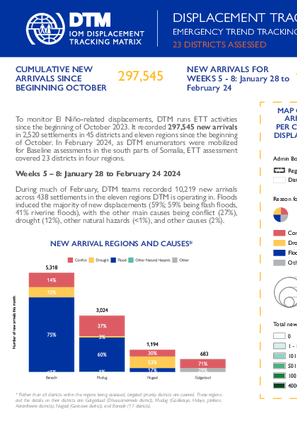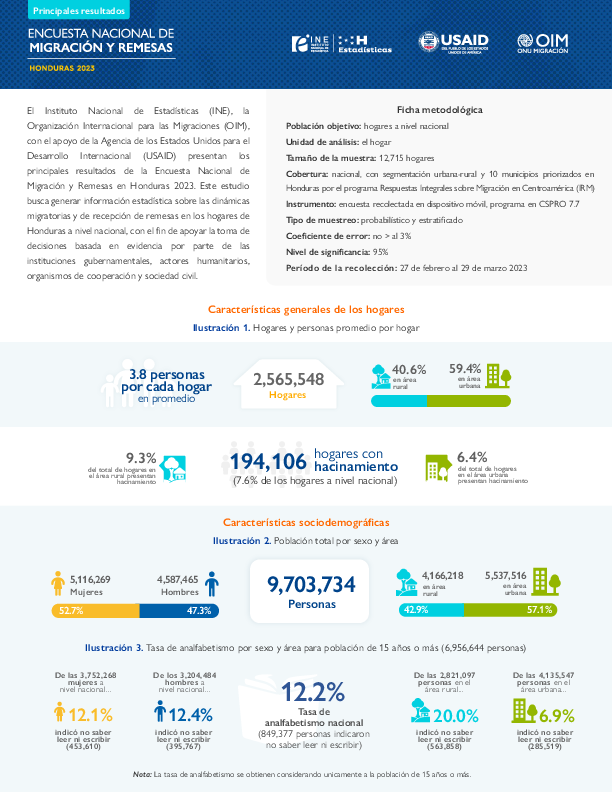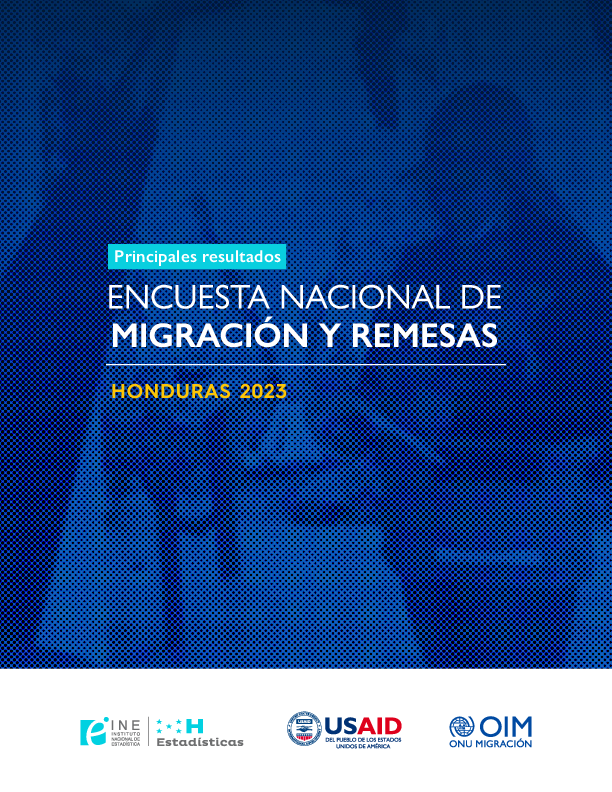-
Countries
-
Data and Analysis
-
Special Focus
-
Crisis Responses

Contact
DTM Somalia, IOMSomaliaDTM@iom.int
Language
English
Location
Somalia
Period Covered
Jan 28 2024
Feb 24 2024
Activity
- Mobility Tracking
- Event Tracking
To monitor El Niño-related displacements, DTM Somalia runs ETT activities in 23 districts within four regions in Somalia. ETT is a crisis-based tool that tracks sudden displacement triggered by specific events or emerging crises. The objective of ETT is to help prioritize humanitarian response and to enable partners to deliver rapid assistance.

Contact
DTM Somalia, IOMSomaliaDTM@iom.int
Language
English
Location
Somalia
Period Covered
Dec 31 2023
Jan 27 2024
Activity
- Mobility Tracking
- Event Tracking
To monitor El Niño-related displacements, DTM Somalia runs ETT activities in 43 districts within eleven regions in Somalia. ETT is a crisis-based tool that tracks sudden displacement triggered by specific events or emerging crises. The objective of ETT is to help prioritize humanitarian response and to enable partners to deliver rapid assistance.

Contact
DTM Burundi, DTMBurundi@iom.int
Language
English
Location
Burundi
Period Covered
Mar 17 2024
Mar 23 2024
Activity
- Mobility Tracking
- Event Tracking
La DTM Burundi a le plaisir de vous partager (dans le lien ci-dessus) des informations sur les urgences qui se sont produites au Burundi en dates du 17 au 23 mars 2024. La DTM a identifié 3 349 personnes affectées (901 ménages) dont 2 429 personnes déplacées (627 ménages) par les inondations, les vents violents et les pluies torrentielles dans les provinces de Bujumbura Rural, Cibitoke, Makamba, Rumonge et Kirundo.

Contact
iomkyrgyzstan@iom.int
Language
English
Location
Kyrgyzstan
Period Covered
Dec 01 2023
Dec 31 2023
Activity
- Survey
- Flow Monitoring Survey
- Mobility Tracking
- Baseline Assessment
The report presents findings from key informant interviews and surveys conducted in Kyrgyzstan using the International Organization for Migration's (IOM) Mobility Tracking Matrix (MTM) system. Adapted from IOM's Global Displacement Tracking Matrix (DTM) methodology, MTM aims to collect and analyze data to understand the mobility, vulnerabilities, and needs of displaced and mobile populations for evidence-based migration management.
The study utilized DTM's Mobility Tracking Baseline Assessment and Survey methods. Key informant interviews, conducted with local representatives knowledgeable about migrant situations and mobility, provided insights into the timing, locations, and reasons for migrant worker returns. Surveys were administered to returning migrant workers, covering socio-economic profiles, migration experiences, employment, remittances, general well-being in Kyrgyzstan, and impacts of imposed sanctions.

Contact
iomtegucigalpa@iom.int
Language
Spanish
Location
Honduras
Period Covered
Feb 27 2023
Mar 29 2023
Activity
- Survey
El Instituto Nacional de Estadísticas (INE), la Organización Internacional para las Migraciones (OIM), con el apoyo de la Agencia de los Estados Unidos para el Desarrollo Internacional (USAID) presentan los principales resultados de la Encuesta Nacional de Migración y Remesas en Honduras 2023. Este estudio busca generar información estadística sobre las dinámicas migratorias y de recepción de remesas en los hogares de Honduras a nivel nacional, con el n de apoyar la toma de decisiones basada en evidencia por parte de las instituciones gubernamentales, actores humanitarios, organismos de cooperación y sociedad civil.

Contact
DTM Ethiopia, DTMEthiopia@iom.int
Language
English
Location
Ethiopia
Period Covered
Jan 01 2024
Jan 31 2024
Activity
- Flow Monitoring
In January 2024, a total of 40,464 movements were observed across the six flow monitoring points (FMPs) in Ethiopia. This represents a 5.7% increase in daily average movements in comparison with December 2023 when an average of 1,235 movements per day were observed.
Outgoing movements (63%) during January decreased while incoming movements (37%) increased compared to the previous month, mainly due to increased incoming flows of returning migrants to Ethiopia through different entry points. A total of 25,373 outgoing movements were observed, out of which 12,558 (49.5%) were heading to Saudi Arabia, 5,404 (21.3%) were going to Kenya, 2,182 (8.6%) to Djibouti, 1,682 (6.6%) to Somalia, 1,005 (4%) to South Africa, 954 (3.8%) to Yemen, and 552 (2.2%) to Sudan, while remaining movements were heading to other Southern African, Middle Eastern, and North American countries.
At the same time, 15,091 incoming movements were observed, out of which 10,401 (68.9%) originated from Sudan, while 2,291 (15.2%) came from Kenya, 1,392 (9.2%) from Djibouti, 882 (5.8%) from Somalia and 125 (0.9%) came from other Middle Eastern and Horn of Africa countries. Most incoming movements were by Ethiopians (65.3%), followed by Sudanese nationals (33.5%). Returning Ethiopians departed from Sudan (52.7%), Kenya (23.1%), Djibouti (14%), Somalia (8.9%), Yemen (1.2%), and South Sudan (0.1%).

Contact
iomtegucigalpa@iom.int
Language
Spanish
Location
Honduras
Period Covered
Feb 27 2023
Mar 29 2023
Activity
- Survey
Honduras cuenta con un historial de distintas dinámicas migratorias. En los últimos tres años scales (de octubre 2020 a septiembre 2023), se contabilizan más de 746,000 aprehensiones de personas hondureñas en la frontera suroeste terrestre de Estados Unidos (CBP). Asimismo, más de 768,000 personas nacidas en Honduras residen en Estados Unidos (US Census Bureau). Por otro lado, las remesas familiares son un importante elemento de la economía y las familias en Honduras. Durante 2022, se recibieron 8,686.2 millones de dólares bajo este concepto, representando el 25.5% del Producto Interno Bruto (BCH).
El último estudio nacional de migración en Honduras fue desarrollado en 2010 por el INE, y abarcaba diversos temas como emigración, migración interna, inmigración, entre otros. En un contexto de dinámicas complejas de movilidad humana, existe una brecha en la disponibilidad de datos nacionales actualizados sobre las dinámicas migratorias.
Ante esto, el INE y la OIM han desarrollado la Encuesta Nacional de Migración y Remesas (ENMR) 2023, bajo el programa Respuestas Integrales sobre Migración en Centroamérica (IRM, por sus siglas en inglés), con el apoyo de la Agencia de los Estados Unidos para el Desarrollo Internacional (USAID, por sus siglas en inglés). El objetivo de la ENMR 2023 es generar información estadística sobre las dinámicas migratorias y de recepción de remesas en los hogares de Honduras a nivel nacional, con el fin de apoyar la toma de decisiones basada en evidencia por parte de las instituciones gubernamentales, actores humanitarios, organismos de cooperación y sociedad civil.
En el período del 27 de febrero al 29 de marzo de 2023, se realizó el levantamiento de información de la ENMR, lo cual permite presentar hallazgos según los diez capítulos del reporte: I. Características de los hogares, II. Características sociodemográ cas, III. Principales características socioeconómicas, IV. Migración interna, V. Inmigración, VI. Migración internacional, VII. Emigración reciente, VIII. Intención de migrar, IX. Remesas familiares y X. Análisis comparativo.

Contact
DTM Europe, DTMMediterranean@iom.int
Language
English
Location
Republic of Moldova
Period Covered
Jan 01 2023
Dec 31 2023
Activity
- Survey
- Flow Monitoring
Key Findings
- 20 per cent of respondents have or live with people with specific needs or serious medical conditions
- Main health issues for women include chronic disease or serious medical conditions (12%), pregnancy or lactating (3%), difficulty walking (2%) and visual impairment (1%)
- Main health issues for men include chronic disease or serious medical conditions (22%), difficulty walking (5%), visual impairment (4%) and hearing impairment (2%)
- 61 per cent of those with a health condition intend to stay in the Republic of Moldova
- Top 3 needs include financial support (64%), medication (32%) and health services (31%)
- Majority of respondents report no barriers to healthcare services (84%)
- Those who do report barriers cite costs (9%), unavailable services (2%), language barrier (1%) and waiting times (1%)
Benin
IDPs tracked
Displacement Movements
No figure is available
IDMC 2023
Data collection round

Contact
DTM Somalia, IOMSomaliaDTM@iom.int
Language
English
Location
Somalia
Period Covered
Feb 01 2023
Jan 31 2024
Activity
- Survey
- Mobility Tracking
- Baseline Assessment
Baseline 2, an area-based assessment, is the second step of Mobility Tracking implemented at settlement level and aims to quantify presence of population categories.
As of January 2024, DTM Somalia has mapped around 3,539,634 IDPs, 155,710 returnees and 9,052,583 residents across 17 regions and 10,999 assessed locations. IDPs were present in 45 per cent of locations assessed (4,611 locations) and returnees were present in eleven per cent of assessed locations (1,204 locations).
The report offers detailed results for 17 regions. The results include regions of origins, reasons for displacement and accessibility information among others.


